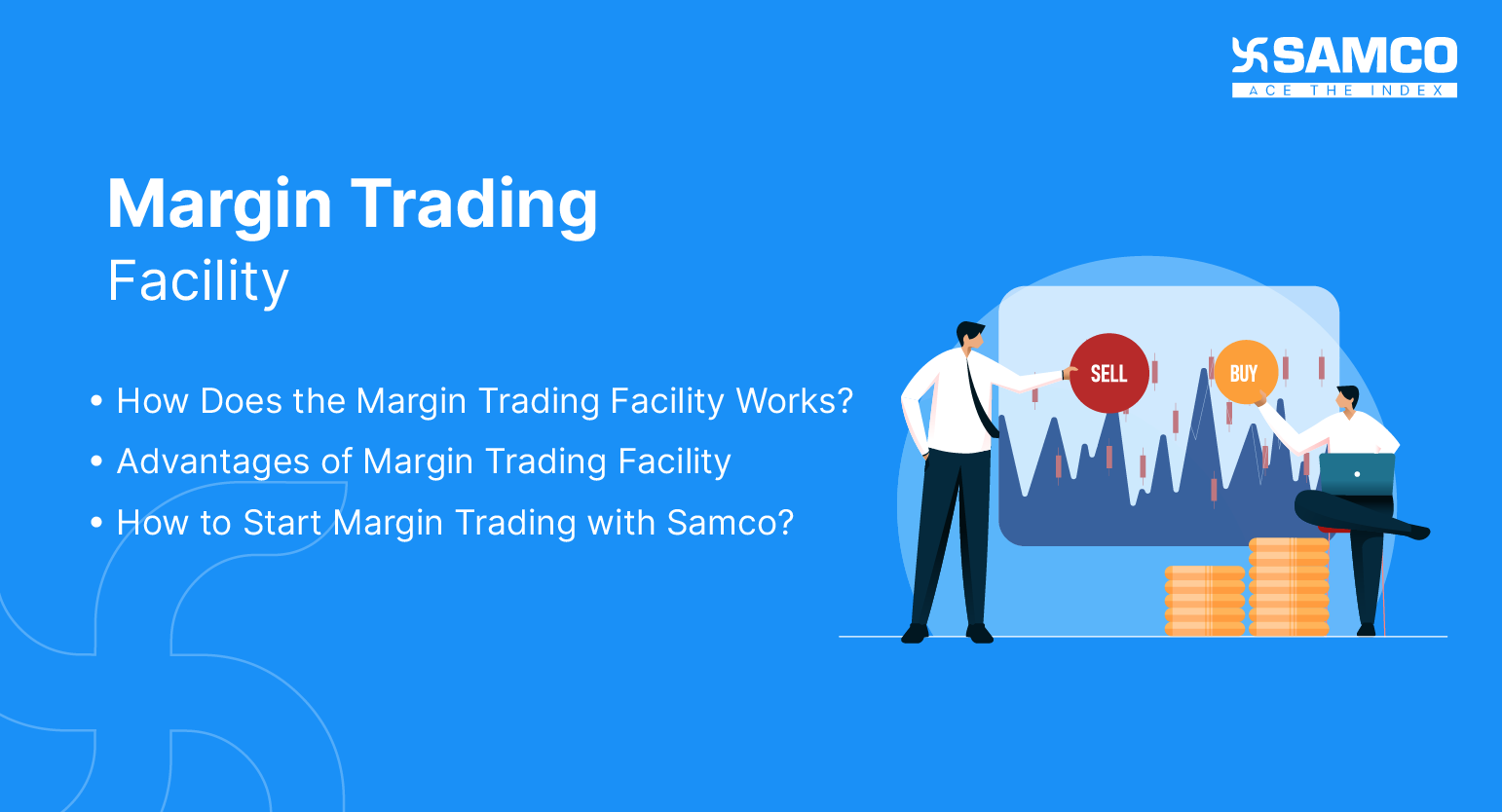In this article, we will discuss
- What Is the Margin Trading Facility?
- Margin Trading Facility – A Deeper Dive
- How Does the Margin Trading Facility Works?
- Advantages of Margin Trading Facility
- Risks Associated With Margin Trading
- Things to Remember Before Opting for Margin Trading
- Why Choose the Samco App for Margin Trading Facility?
- How to Start Margin Trading with Samco?
What Is the Margin Trading Facility?
 Usually, traders have to analyse several factors and patiently wait for the right moment to execute a profitable trade. But, when a good trading opportunity comes, should they just pass it away due to the lack of adequate funds?
The answer is no. They can simply opt for the Margin Trading Facility (MTF), which will effectively increase their purchasing power. Keep reading this article to learn how this works.
Usually, traders have to analyse several factors and patiently wait for the right moment to execute a profitable trade. But, when a good trading opportunity comes, should they just pass it away due to the lack of adequate funds?
The answer is no. They can simply opt for the Margin Trading Facility (MTF), which will effectively increase their purchasing power. Keep reading this article to learn how this works.
Margin Trading Facility – A Deeper Dive
Margin trading is a facility offered by brokerage firms that allows traders to purchase securities even when they are short on funds. By opting for it, individuals can buy assets with borrowed funds after paying only a fraction of the transaction value. This payable amount is called the margin and thus this facility is known as the margin trading facility. Interest is charged on the borrowed amount on a daily basis. For paying the margin amount to your broker, you can do it either in cash or offer shares as collateral. However, in the case of the latter, there will be a certain percentage of deduction in value. Some brokers will even allow a mix of stocks and cash for this purpose. The broker covers the remaining transaction value in the form of a loan. Interest will be applicable on this amount and you can settle the entire sum while squaring off your position. As per the Securities and Exchange Board of India (SEBI) guidelines, you must pledge the shares you buy using MTF. What’s more, you have to complete this process by 9:00 PM on the date of purchase to avoid your assets being squared off on T+6 days.How Does the Margin Trading Facility Works?
Let’s take an example to understand how margin trading works: Suppose, you have spotted an excellent trade opportunity for which you need to buy shares worth ₹10 lakh. However, you have just ₹1 lakh in your bank account. So, you decide to buy the assets using the margin trading facility. In this case, you can buy the shares by only paying a fraction of the transaction value, which is ₹1 lakh in this case. Your broker pays the remaining ₹9 lakh. In this situation, you have used 10x leverage on your initial investment, i.e. the margin. In other words, you have multiplied the potential profits by ten times by increasing your order magnitude (from ₹1 lakh to ₹10 lakh). https://www.youtube.com/watch?v=eMhtCWN6PjUAdvantages of Margin Trading Facility
The benefits of using MTF are as follows:
-
Safe and Secure
-
Long Holding Periods
-
Enhances Purchasing Power
-
To Capitalise on Short-term Movements
Risks Associated With Margin Trading
Despite all the benefits, a margin trading facility also comes with a set of risks. Some of them are listed below:-
Obligation to Maintain a Minimum Balance
-
Asset Liquidation
-
Enhanced Losses
-
Approved for Only a Selected Range of Securities
Things to Remember Before Opting for Margin Trading
Before going for MTF, traders should keep certain things in mind. They are as follows:-
Consider Borrowing for Shorter Durations
-
Increase Margin Utilisation at a Sustained Pace
-
Always Use a Stop-Loss Order
-
Try and Avoid Margin Calls
-
Understand the Broker’s Terms and Conditions
-
Create a Backup Fund
Why Choose the Samco App for Margin Trading Facility?
When you plan to participate in margin trading, choosing a brokerage firm which can provide you with the highest leverage options is essential. In this regard, Samco is the ideal choice. Here are some of the benefits you get by trading with Samco:- High Leverage: You can get up to 4X margin for equity delivery with brokerage charges as low as ₹20/executed order. Moreover, you can avail up to 20X margin for options, 33X for intraday trading, 80X for commodities, and 100X for futures.
- Convenient Trading Facility: Apart from this, you can execute your trades with just a single click and getmargi live notifications for all your pending and completed orders. You can also get personalised notifications on your favourite stocks and real-time profit and loss updates on your trade positions.
- Timely Alerts and Notifications: Samco ensures to deliver timely alerts for your preferred trading instruments. You will also get live notifications of pending and executed orders and the latest updates of stock market news.
How to Start Margin Trading with Samco?
Activating the margin trading facility is super easy. The steps are:- Step 1- Open the app and tap on ‘Accounts’ on the top-left part of the screen.
- Step 2- Click ‘Manage My Subscriptions’ and then on ‘CashPlus Subscription’.
- Step 3- Read and accept all the terms and conditions.
- Step 4- Pay the ₹1 subscription fee via your debit/credit card, ledger or net banking.



 Easy & quick
Easy & quick
Leave A Comment?